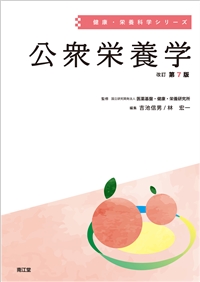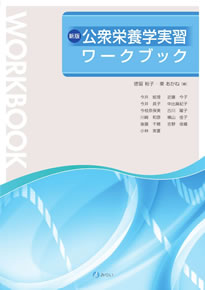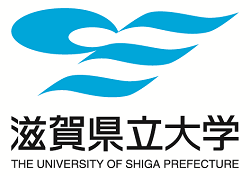[概要]© 2020 by the authors. Licensee MDPI, Basel, Switzerland. Background: To decrease mortality, the benefit of combined healthy lifestyles has been suggested but is still unclear, especially for cause-specific mortality. We examined the relationship between combined lifestyle factors and all-cause and cause-specific mortality in Shiga prefecture, Japan. Methods: This was an ecological study of 19 municipalities, using the data from the 2008–2012 standard mortality ratio (SMR) reported by the Ministry of Health and Welfare and the 2015 Health and Nutrition Survey in Shiga prefecture. The health behaviors score was calculated based on five factors (ranging from 0 to 5): diet quality (assessed adherence to dietary reference intake for Japanese), smoking, alcohol drinking, regular exercise, and sleep duration. In the multiple linear regression, the relationships between the health behaviors score and SMR of all-cause, cancer, heart diseases, and cerebrovascular diseases were estimated by sex. Results: The health behaviors score was negatively associated with the cancer SMR in women (β = −0.968, p = 0.011). For other causes, no significant association was found for either sex. A greater proportion of those who never smoked (β = −0.780, p = 0.016) and those who had a higher quality diet (β = −0.703, p = 0.048) were associated with lower cancer SMR in women. Women’s intake of some micronutrients, particularly fruits, was higher than men. This study suggests that a combination of health behaviors, especially never smoking and high-quality diet intake are associated with lower cancer SMR in women and could be helpful in prolonging life expectancy.
The association with dietary patterns and risk of anemia in Japanese elderly.
Kito A, Imai E. Journal of Nutritional Science and Vitaminology 66 (1) 32 ~ 40 2020年03月
[概要]© 2020, Center for Academic Publications Japan. All rights reserved. Anemia is a risk factor for frailty. Although various factors can reduce the risk of anemia, information on dietary contributions is limited. This study aimed to evaluate the association between anemia and eating patterns in Japanese elderly. Our study included 6,864 elderly individuals, aged ≥65 y, whose data were obtained from the 2010–2015 National Health and Nutritional Survey, Japan. Anemia was defined as whole blood hemoglobin concentrations <13 g/dL in men, and <12 g/dL in women. We classified eating patterns into 33 food groups, using food items obtained from dietary records, and identified three dietary patterns using principal component analysis method. Participants were assigned and divided into quartiles according to pattern-specific factor scores. We calculated adjusted odds ratios (ORs) for anemia using multivariate logistic regression, and assigned the first quartile (minimum) as the reference. The overall prevalence of anemia was 17.1%. The meats and vegetables eating pattern was characterized by red meat and other vegetables, the Japanese eating pattern by rice and salted or pickled vegetables, and the fruits and vegetables eating pattern by fruits and green-yellow vegetables. Participants in the highest meats and vegetables eating pattern quartile had a 20% lower risk of anemia than those in the lowest quartile (OR 0.81; 95% confidence interval (CI) 0.66–1.00); the Japanese eating pattern participants had a 20% higher risk of anemia (OR 1.28; 95% CI 1.06–1.53). The fruits and vegetables eating pattern participants had no significant change in their risk of anemia. This study may indicate that consuming a high red meat diet prevents anemia in el
Fish and meat intakes and prevalence of anemia among the Japanese elderly.
Imai E, Nakade M. Asia Pacific Journal of Clinical Nutrition 28 (2) 276 ~ 284 2019年06月
[概要] Background and objectives: Information about an association between animal food intakes and risk of anemia is still limited. This study aimed to investigate the association between fish and meat intake and anemia risk in the Japanese elderly.Methods and study design: A nationally representative sample of 6,469 aged 65 years and over was obtained from pooled data of annual National Health and Nutritional Survey in Japan during 2002-2011. Anemia was defined as hemoglobin concentrations <13.0g/dL in males and <12.0 g/dL in females. Logistic regression analysis, with the lowest intake tertile as the reference, was applied to estimate anemia risk for each nutrient and food group.Results: After adjustment for putative confounding factors, males in the highest tertile of animal protein intake had significantly lower risk of anemia than those in the lowest tertile (odds ratio (OR): 0.77; 95% confidence interval (CI): 0.63, 0.95; p for trend=0.017). These associations were not seen in females (OR: 0.72, 95% CI: 0.49, 1.06; p for trend=0.100). Multivariate analyses revealed that anemia risk (OR: 0.80; 95% CI: 0.65, 0.97; p for trend =0.002) was lower for males in the highest tertile of fish intake than in the lowest tertile; this effect was also observed for females (OR: 0.64; 95% CI: 0.45, 0.92; p for trend =0.014). In both sexes, the highest tertile of meat intake was not associated with lower anemia risk in the multivariate-adjusted models.Conclusions: The current cross-sectional study in Japanese elderly males suggests that higher animal protein, specifically the high protein content of fish may be associated with a lower prevalence of anemia.
Oral glucose tolerance and tryptophan metabolism in non-obese and non-insulin-dependent diabetic Goto–Kakizaki rats fed high-tryptophan diets.
Imai E, Shibata K. Journal of Nutritional Science and Vitaminology 64 47 ~ 54 2018年
[概要]© 2018, Center for Academic Publications Japan. All rights reserved. We investigated oral glucose tolerance and tryptophan (Trp) metabolism in non-obese and non-insulin-dependent diabetic Goto–Kakizaki (GK) rats fed high-Trp diets. Five-week-old male Wistar and GK rats were fed a 20% casein diet (control diet) or the same diet supplemented with 1%, 2%, 3%, or 5% Trp for 58 d. Oral glucose tolerance tests were performed on Days 14 and 28 of the experimental period. Urine as well as livers and blood were collected on the last day of the experiment. The glucose concentration and the amount of Trp metabolites were measured. On Day 14 of the experiment, the incremental blood glucose concentrations integrated over a period of 2 h (∆AUC0-2h) of blood glucose in rats fed the 3% and 5% Trp diets had decreased by 13% and 18%, respectively, compared with that of the control-GK rats. However, no significant differences were found in the rats fed +1% or +2% Trp diets compared with control-GK rats. On Day 28, there were no significant differences found in the ∆AUC0-2hof blood glucose levels in any group including the control-GK group. On the last day, the concentrations of plasma glucose, total cholesterol, and triglyceride did not show differences in any group. There were no specific phenomena observed in the metabolism of Trp in GK rats even when fed an excess of Trp, compared with that of Wistar rats. Oral Trp administration and its continuous use may not improve blood glucose levels in type 2 diabetic rats.
Different psychosocial factors are associated with different intention and self-efficacy toward eating breakfast among Japanese breakfast skippers: a gender comparison.
Nakade M, Tsubota-Utsugi M, Imai E, Tsuboyama-Kasaoka N, Nishi N, Takimoto H. Asia Pacific Journal of Public Health 29 (2) 102 ~ 113 2017年
[概要]A cross-sectional study was conducted among 7593 adults to clarify lifestyle and psychosocial characteristics of breakfast skippers with different intention and self-efficacy toward eating breakfast. Data were obtained from Japan’s national survey in 2009. Multinomial logistic regression analyses were performed to examine the characteristics of each breakfast skipper (having intention and self-efficacy toward eating breakfast [IS], having intention but not self-efficacy [INS], and not having intention to eat breakfast [NI]) compared with breakfast eaters. IS men were less likely to demonstrate understanding of healthy eating. INS and NI men were more likely to eat alone. INS and NI women were less likely to demonstrate understanding of healthy eating. NI men and women were less likely to report weight management behavior. Current smoking and being sleep-deprived were commonly associated with breakfast skipping in both sexes. Our results suggested the need for approaches considering type of breakfast skippers (eg, different intention and self-efficacy).
Improved Prevalence of Anemia and Nutritional Status among Japanese Elderly Participants in the National Health and Nutritional Survey Japan, 2003-09.
Imai E, Nakade M, Kasaoka T, Takimoto H. Journal of Nutrition & Food Sciences 6 (3) 2016年04月
The physical examination content of the Japanese National Health and Nutrition Survey: temporal changes.
Tanaka H, Imai,S, Nakade M, Imai E, Takimoto H. Asia Pacific Journal of Clinical Nutrition 25 (4) 898 ~ 910 2016年
Animal protein intake is associated with higher-level functional capacity in the elderly: The Ohasama study.
Imai E, Tsubota-Utsugi M, Kikuya M, Satoh M, Inoue R, Hosaka M, Metoki H, Fukushima N, Kurimoto A, Hirose T, Asayama K, Imai Y, Ohkubo T. Journal of the American Geriatrics Society 6 426 ~ 634 2014年
Historical overview of the establishment of Dietary Reference Intakes for Japanese.
Tsuboyama-Kasaoka N, T.Utsugi M, Imai E, Nakade M, Kasuga M. Journal of Nutritional Science and Vitaminology 59 S6 ~ S8 2013年
Distribution of vitamin E intake among Japanese dietary supplement and fortified food users: a secondary analysis from the National Health and Nutrition Survey, 2003-2009.
Tsubota-Utsugi M, Nakade M, Imai E, Tsuboyama-Kasaoka N, Nozue M, Umegaki K, Yoshizawa T, Okuda N, Nishi N, Takimoto H. Journal of Nutritional Science and Vitaminology 59 576 ~ 583 2013年
Changes of B-group vitamin status in adenine-induced chronic renal failure rats.
Imai E, Sano M, Fukuwatari T, and Shibata K. Bioscience, Biotechnology, and Biochemistry 77 1108 ~ 1110 2013年
Systematic classification of evidence for Dietary Reference Intakes for Japanese 2010 (DRIs-J 2010) in adults and future prospects of DRIs in Asian countries.
Nakade M, Imai E, Tsubota-Utsugi M, Tsuboyama-Kasaoka N, Takimoto H. Asia Pacific Journal of Clinical Nutrition 22 474 ~ 489 2013年
Dietary intake of nutrients with Adequate Intake values in the Dietary Reference Intakes for Japanese.
Tsuboyama-Kasaoka N, Takizawa A, Tsubota-Utsugi M, Nakade M, Imai E, Kondo A, Yoshida K, Okuda N, Nishi N, Takimoto H. Journal of Nutritional Science and Vitaminology 59 584 ~ 595 2013年
Evaluation of the prevalence of iodine intakes from four 3-day dietary records above the tolerable upper intake level in a Japanese population.
Tsubota-Utsugi M, Imai E, Nakade M, Matsumoto T, Tsuboyama-Kasaoka N, Nishi N, Tsubono Y. Journal of Nutritional Science and Vitaminology 59 310 ~ 316 2013年
Dietary reference intakes for Japanese 2010: Water-soluble Vitamins.
Shibata K, Fukuwatari T, Imai E, Hayakawa T, Watanabe F, Takimoto H, Watanabe T, and Umegaki K. Journal of Nutritional Science and Vitaminology 59 S67 ~ S82 2013年
Dietary Reference Intakes for Japanese 2010: Fat-soluble vitamins.
Tanaka K, Terao J, Shidoji Y, Tamai H, Imai E, Okano T. Journal of Nutritional Science and Vitaminology 59 S57 ~ S66 2013年
Dietary reference intakes for Japanese 2010: Carbohydrates.
Yamada K, Tsuboyama-Kasaoka N, Goda T, Saito K, Yamanouchi T, Yokoyama T, Chonan O, Imai E, Nakade M. Journal of Nutritional Science and Vitaminology 59 S53 ~ S56 2013年
The urinary excretory ratio of nicotinamide catabolites is associated with the conversion ratio of tryptophan to nicotinamide in growing rats fed a niacin-free 20% casein diet.
Shibata K, Imai E, Sano M, Fukuwatari T. Bioscience, Biotechnology, and Biochemistry 76 186 ~ 188 2012年
Urinary excretion of water-soluble vitamins increases in streptozotocin-induced diabetic rats without decreases in liver and blood vitamin contents.
Imai E, Sano M, Fukuwatari T, Shibata K. Journal of Nutritional Science and Vitaminology 58 54 ~ 58 2012年
Relationship of homocysteine and homocysteinerelated vitamins to bone mineral density in Japanese patients with type 2 diabetes.
Yamada C, Fujimoto S, Ikeda K, Nomura Y, Matsubara A, Kanno M, Shide K, Tanaka K, Imai E, Fukuwatari T, Shibata K, Inagaki N. Journal of Diabetes Investigation 2 233 ~ 239 2011年
Association between 24 h urinary α-tocopherol catabolite, 2, 5, 7, 8-tetramethyl-2(2'-carboxyethyl)-6-hydroxychroman (α-CEHC) and α-tocopherol intake in intervention and cross-sectional studies.
Imai E, Tsuji T, Sano M, Fukuwatari T, Shibata K. Asia Pacific Journal of Clinical Nutrition 20 507 ~ 513 2011年
著書
 公衆栄養学 改訂第7版(健康・栄養科学シリーズ) 南江堂 2020年03月
公衆栄養学 改訂第7版(健康・栄養科学シリーズ) 南江堂 2020年03月
国立健康・栄養研究所(編) 執筆担当;3-C 国民健康・栄養調査法.
 新版 公衆栄養学実習ワークブック みらい 2016年07月
新版 公衆栄養学実習ワークブック みらい 2016年07月
徳留裕子・東あかね(編) 執筆担当;UNIT2-3国民健康・栄養調査法, UNIT2-8食事摂取基準による栄養素等摂取量の評価.
 応用栄養学 第2版(ステップアップ栄養・健康科学シリーズ) 化学同人 2017年09月
応用栄養学 第2版(ステップアップ栄養・健康科学シリーズ) 化学同人 2017年09月
北島 幸枝(編) 執筆担当;6章 成長期(幼児期,学童期,思春期)
 公衆栄養学 第2版 (ステップアップ栄養・健康科学シリーズ) 化学同人 2019年12月
公衆栄養学 第2版 (ステップアップ栄養・健康科学シリーズ) 化学同人 2019年12月
荒牧礼子,今井絵理(編) 執筆担当;第3章栄養政策,第4章栄養疫学
 応用栄養学 第5版 化学同人 2021年3月
応用栄養学 第5版 化学同人 2021年3月
福渡 努 ,岡本 秀己(編) 執筆担当;2章 日本人の食事摂取基準.
 公衆栄養学 改訂第7版(健康・栄養科学シリーズ) 南江堂 2020年03月
公衆栄養学 改訂第7版(健康・栄養科学シリーズ) 南江堂 2020年03月  新版 公衆栄養学実習ワークブック みらい 2016年07月
新版 公衆栄養学実習ワークブック みらい 2016年07月
 応用栄養学 第2版(ステップアップ栄養・健康科学シリーズ) 化学同人 2017年09月
応用栄養学 第2版(ステップアップ栄養・健康科学シリーズ) 化学同人 2017年09月
 公衆栄養学 第2版 (ステップアップ栄養・健康科学シリーズ) 化学同人 2019年12月
公衆栄養学 第2版 (ステップアップ栄養・健康科学シリーズ) 化学同人 2019年12月
 応用栄養学 第5版 化学同人 2021年3月
応用栄養学 第5版 化学同人 2021年3月
